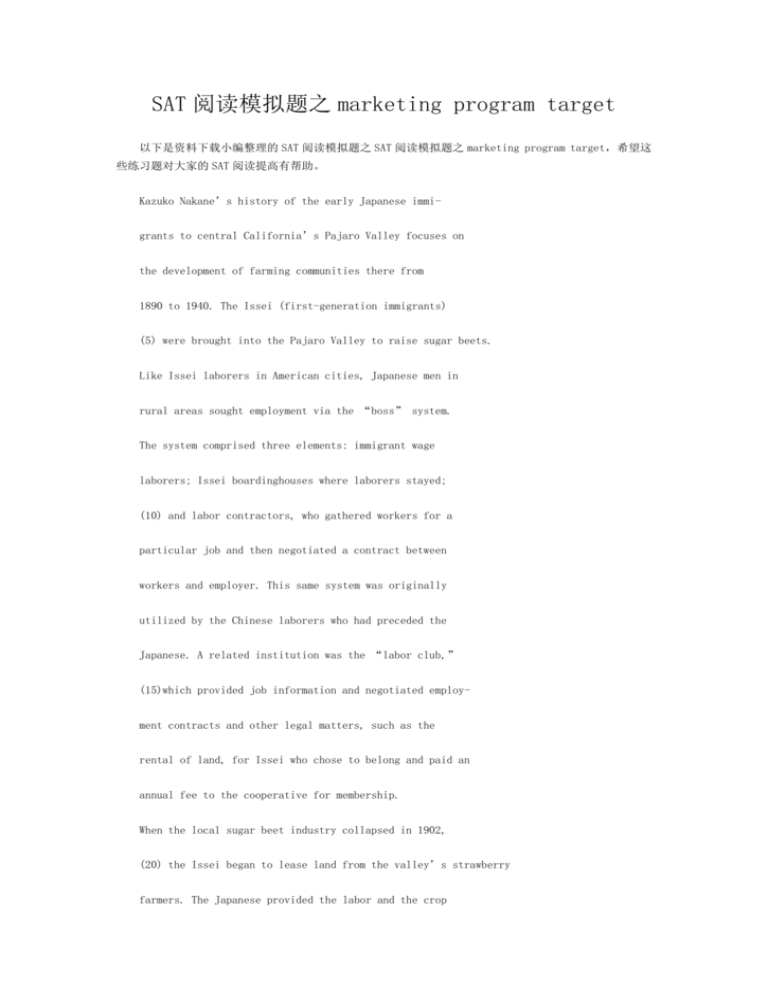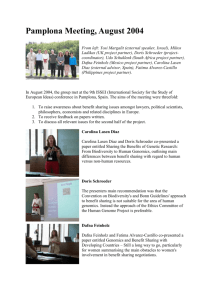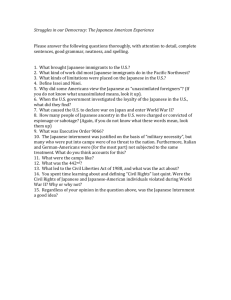SAT阅读模拟题之marketing program target 以下是资料下载小编整理
advertisement

SAT 阅读模拟题之 marketing program target 以下是资料下载小编整理的 SAT 阅读模拟题之 SAT 阅读模拟题之 marketing program target,希望这 些练习题对大家的 SAT 阅读提高有帮助。 Kazuko Nakane’s history of the early Japanese immigrants to central California’s Pajaro Valley focuses on the development of farming communities there from 1890 to 1940. The Issei (first-generation immigrants) (5) were brought into the Pajaro Valley to raise sugar beets. Like Issei laborers in American cities, Japanese men in rural areas sought employment via the “boss” system. The system comprised three elements: immigrant wage laborers; Issei boardinghouses where laborers stayed; (10) and labor contractors, who gathered workers for a particular job and then negotiated a contract between workers and employer. This same system was originally utilized by the Chinese laborers who had preceded the Japanese. A related institution was the “labor club,” (15)which provided job information and negotiated employment contracts and other legal matters, such as the rental of land, for Issei who chose to belong and paid an annual fee to the cooperative for membership. When the local sugar beet industry collapsed in 1902, (20) the Issei began to lease land from the valley’s strawberry farmers. The Japanese provided the labor and the crop was divided between laborers and landowners. The Issei began to operate farms, they began to marry and start families, forming an established Japanese American (30) community. Unfortunately, the Issei’s efforts to attain agricultural independence were hampered by government restrictions, such as the Alien Land Law of 1913. But immigrants could circumvent such exclusionary laws by leasing or purchasing land in their American-born (35) children’s names. Nakane’s case study of one rural Japanese American community provides valuable information about the lives and experiences of the Isseil. It is, however, too particularistic. This limitation derives from Nakane’s (40) methodology—that of oral history—which cannot substitute for a broader theoretical or comparative perspective. Furture research might well consider two issues raised by her study: were the Issei of the Pajaro Valley similar to or different from Issei in urban settings, (45) and what variations existed between rural Japanese American communities? 1. The primary purpose of the passage is to (A) defend a controversial hypothesis presented in a history of early Japanese immigrants to Califronia (B) dismiss a history of an early Japanese settlement in California as narrow and ill constructed (C) summarize and critique a history of an early Japanese settlement in California (D) compare a history of one Japanese American community with studies of Japanese settlements throughout California (E) examine the differences between Japanese and Chinese immigrants to central California in the 1890’s 2. Which of the following best describes a “labor club,” as defined in the passage? (A) An organization to which Issei were compelled to belong if they sought employment in the Pajaro Valley (B) An association whose members included labor contractors and landowning “bosses” (C) A type of farming corporation set up by Issei who had resided in the Pajaro Valley for some time (D) A cooperative association whose members were dues-paying Japanese laborers (E) A social organization to which Japanese laborers and their families belonged 3. Based on information in the passage, which of the following statements concerning the Alien Land Law of 1913 is most accurate? (A) It excluded American-born citizens of Japanese ancestry from landownership. (B) It sought to restrict the number of foreign immigrants to California. (C) It successfully prevented Issei from ever purchasing farmland. (D) It was applicable to first-generation immigrants but not to their American-born children. (E) It was passed under pressure from the Pajaro Valley’s strawberry farmers. 4. Several Issei families join together to purchase a strawberry field and the necessary farming equipment. Such a situation best exemplifies which of the following, as it is described in the passage? (A) A typical sharecropping agreement (B) A farming corporation (C) A “labor club” (D) The “boss” system (E) Circumvention of the Alien Land Law 5. The passage suggests that which of the following was an indirect consequence of the collapse of the sugar beet industry in the Pajaro Valley? (A) The Issei formed a permanent, family-based community. (B) Boardinghouses were built to accommodate the Issei. (C) The Issei began to lease land in their children’s names. (D) The Issei adopted a labor contract system similar to that used by Chinese immigrants. (E) The Issei suffered a massive dislocation caused by unemployment. 6. The author of the passage would most likely agree that which of the following, if it had been included in Nakane’s study, would best remedy the particularistic nature of that study? (A) A statistical table comparing per capita income of Issei wage laborers and sharecroppers in the Pajaro Valley (B) A statistical table showing per capita income of Issei in the Pajaro Valley from 1890 to 1940 (C) A statistical table showing rates of farm ownership by Japanese Americans in four central California counties from 1890 to 1940 (D) A discussion of original company documents dealing with the Pajaro Valley sugar beet industry at the turn of the century (E) Transcripts of interviews conducted with members of the Pajaro Valley Japanese American community who were born in the 1920’s and 1930’s. 7. It can be inferred from the passage that, when the Issei began to lease land from the Valley’s strawberry farmers, the Issei most probably did which of the following? (A) They used profits made from selling the strawberry crop to hire other Issei. (B) They negotiated such agricultural contracts using the “boss” system. (C) They paid for the use of the land with a share of the strawberry crop. (D) They earned higher wages than when they raised sugar beets. (E) They violated the Alien Land Law. 来源于:小马过河 小马过河资料下载频道,欢迎您来下载!








